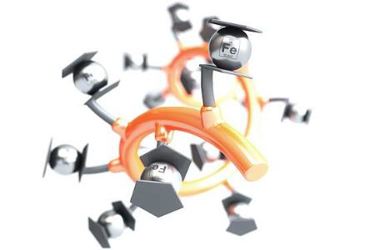Chemists Are Developing A Method To Permanently Remove Dangerous Substances From The Water

PFAS - per- and polyfluorinated chemicals - are true all-rounders. The grease-, water- and dirt-repellent chemicals come in thousands of forms, for example in cookware, functional clothing, cosmetics and as fire extinguishing agents. Unfortunately, they are also a massive problem for the environment. Because they cannot be broken down naturally. Polymer chemists from Saarland and the USA have now found a method of sustainably removing PFAS from water.
They published their method in the journal ACS Applied Materials & Interfaces.
PFAS are incredibly diverse substances. The fluorine-containing organic molecules ensure, among other things, that rain rolls off outdoor jackets, they are found in cardboard boxes in which food is packed, or they are part of extinguishing agents and fire protection clothing. First used in the 1940s, the all-rounders began their triumphal procession and now permeate our entire lives.
That is practical. And a burden on nature and humans. Because the fluorinated chemicals are not degradable in nature. They have now been detected all over the world – in the water, in the soil, in the air, in plants, animals and, at the end of the food chain, in humans. How harmful they are is not yet clear. However, initial studies in animal experiments show a reproductive hazard. What is certain, however, is that these compounds have no place in nature or in organisms, so it makes sense to keep their doses as low as possible.
But the only way to get rid of the organic molecules is with great effort, which also pollutes the environment and the climate. Furthermore, one must first prove these clever molecules. Even very low concentrations can have a very large effect in applications (e.g. as a coating). So far, for example, PFAS can only be effectively filtered out of water with special membranes or with the much cheaper activated carbon. However, these then have to be burned or exposed to relatively harsh conditions in order to finally destroy the substances, since the PFAS can no longer be removed from the filters.
Until now. Scientists working with Markus Gallei, Professor of Polymer Chemistry at Saarland University, and Xiao Su from Illinois, along with their doctoral students Frank Hartmann (Saar University) and Paola Baldaguez (Illinois), have found a method for removing PFAS from water and can then immediately release it again. In this way, the fluorinated substances can not only be collected, but also specifically examined and destroyed without having to burn the filter right away.
The secret behind it is an electrochemical method in which a certain group of metal-containing polymers, so-called metallocenes, play the main role. The oldest of these compounds, iron-based ferrocene, was discovered in 1951, and many other variants followed. Frank Hartmann, Markus Gallei and their international team have now found out that electrodes made of ferrocene and - even more effectively - of a cobaltocene that Frank Hartmann produced can filter out even the tiniest amounts of PFAS molecules from the water.
The highlight, however, is something else: If you “switch” ferro- or cobaltocene, i.e. apply an electrical voltage, they efficiently release the PFAS molecules again. "And cobalt can do that much better than iron," observed Frank Hartmann. "That means nothing other than that we have found a method of how to remove PFAS from the water on the one hand and how to release them again so that the electrode can be used multiple times. Unlike the activated carbon filter, which I have to destroy after the PFAS molecules got stuck in it, I can switch the metallocenes a thousand times if I want,” says Markus Gallei, summarizing the importance of the research work.
Frank Hartmann, Markus Gallei and their colleagues at the University of Illinois in the USA could thus have laid the foundation for further developments on a larger scale in order to be able to efficiently filter out unwanted chemicals from river and ocean water.
Original publication:
Investigating the Electrochemically Driven Capture and Release of Long-Chain PFAS by Redox Metallopolymer Sorbents
Paola Baldaguez Medina, Valentina Ardila Contreras, Frank Hartmann, Deborah Schmitt, Angelique Klimek, Johannes Elbert, Markus Gallei, and Xiao Su
ACS Applied Materials & Interfaces 2023 15 (18), 22112-22122
DOI: 10.1021/acsami.3c01670, https://pubs.acs.org/doi/10.1021/acsami.3c01670
Source: Saarland University
